What Is Digital PR? Guide + Our Best Tools & Tips [2025]
What it is, and how it works.
With every brand and their mom clamouring for attention online, it’s not enough to simply shout the loudest. You need to be heard by the right people, in the right places, at the right time. Brands that win attention aren’t just louder; they’re smarter about where and how they show up.
That's where digital PR comes in. More than just a buzzword, digital PR is a powerful strategy for building lasting online authority, boosting search rankings, earning high-quality media coverage, and creating a positive brand stand across multiple digital channels.
It’s the bridge between traditional public relations and modern content marketing, designed to grow your brand’s digital presence and turn casual browsers into loyal advocates.
If you’re ready to stop shouting into the void and start sparking real conversations online, you’re in the right place.
Try Prezly for freeDigital PR is a modern form of public relations that focuses on increasing a brand’s online visibility through media coverage, content creation, influencer marketing, and link building strategies.
Unlike traditional PR, which often targets print, TV, and radio, digital PR operates across online channels. Think websites, online publications, social media platforms, and search engines.
A strong digital PR strategy is designed to build brand awareness, earn backlinks from authoritative sites, and drive website traffic through search engine results. The best digital PR campaigns combine creative storytelling with deep knowledge of SEO strategy, delivering measurable outcomes and lasting brand visibility.
While both digital public relations and traditional PR aim to build a brand's reputation, their tactics and outcomes differ significantly. Traditional PR typically focuses on offline media outlets like newspapers, magazines, and TV.
Digital PR, however, leverages online platforms—industry publications, blogs, social media, and search engines to reach a highly relevant audience.
Another key distinction: digital PR tactics are far easier to track and measure. Brands can monitor backlinks, brand mentions, referral traffic, and audience engagement in real-time, adjusting strategies based on actionable insights.
Today, most modern PR teams blend both approaches, using traditional PR for brand positioning and digital PR to maximize online visibility and SEO impact.
The PESO model (Paid, Earned, Shared, Owned), created by Gini Dietrich (and revamped in April 2025 to take advantage of AI methodologies), is a cornerstone of strong PR strategy, and digital PR plays a role in each quadrant:
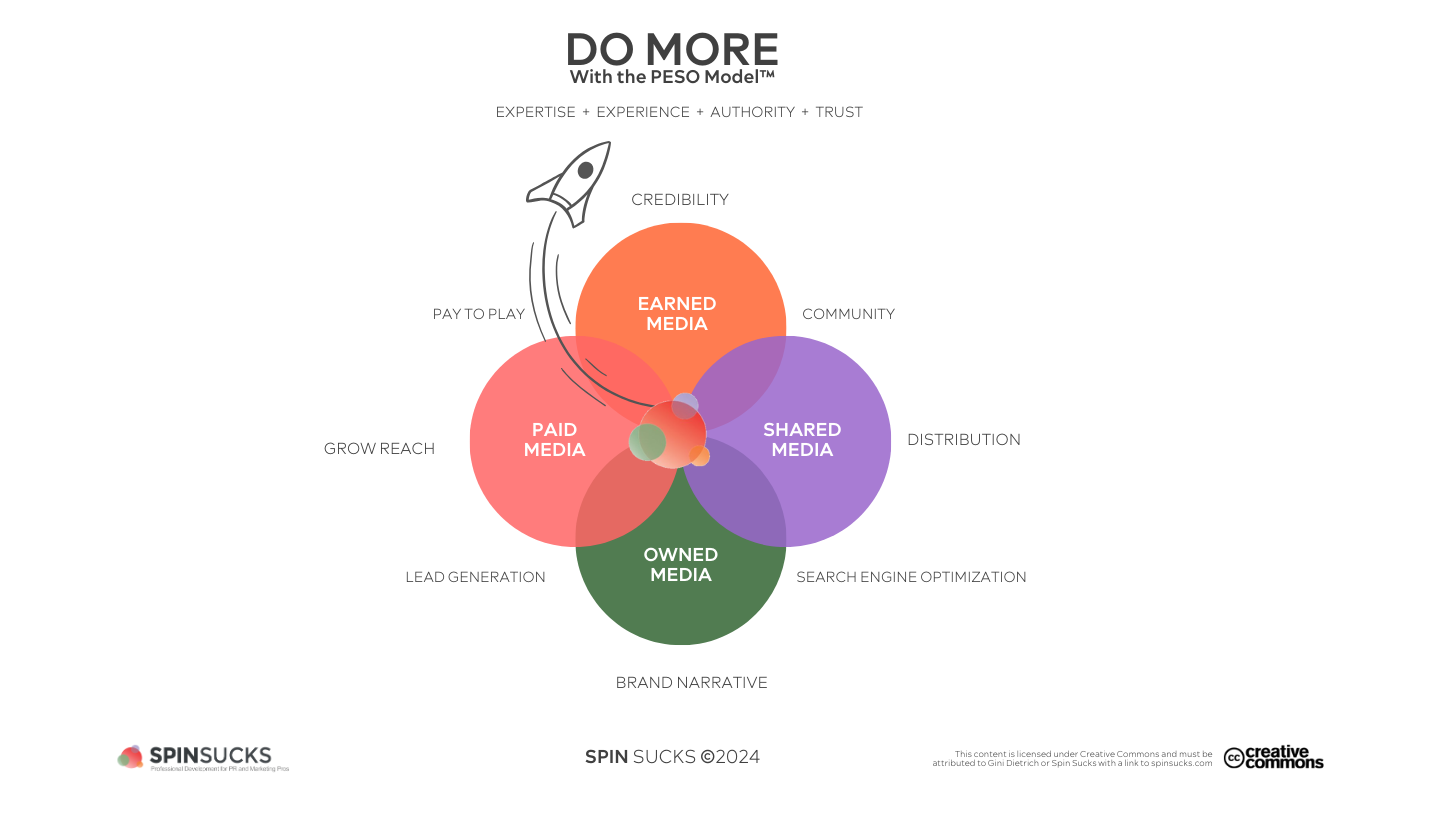
- Sponsored posts on online publications to boost visibility
- Paid influencer partnerships to tap into established audiences
- Native advertising and advertorials in industry publications
- Promoted social media marketing ads to drive traffic and awareness
- Useful for quickly expanding reach and supporting link building when organic reach is limited.
- Securing media coverage in online publications without paying for placement
- Gaining high-quality backlinks from reputable and authoritative sites
- Getting industry blogs, news sites, or influencers to mention or link to your brand
- Builds brand credibility and improves SEO by signaling trust to search engines
- A core focus for a successful digital PR campaign
- Amplifying digital PR content across social media platforms
- Sharing earned media coverage through your brand’s social media accounts
- Encouraging audience engagement and resharing from followers
- Partnering with influencers or advocates to extend content reach
- Keep conversations about your brand active and visible online
- Hosting content on brand-owned channels like blogs, online newsrooms, or websites
- Creating assets such as whitepapers, videos, podcasts, and research hubs
- Building a home for journalists and online publishers to find relevant content easily, such as an online newsroom
- Improves long-term SEO and strengthens your brand’s digital presence
- Acts as a foundation for distributing PR campaigns and supporting ongoing visibility
The most successful digital PR campaigns align efforts across all four areas to maximize impact and build relationships with their target audience.
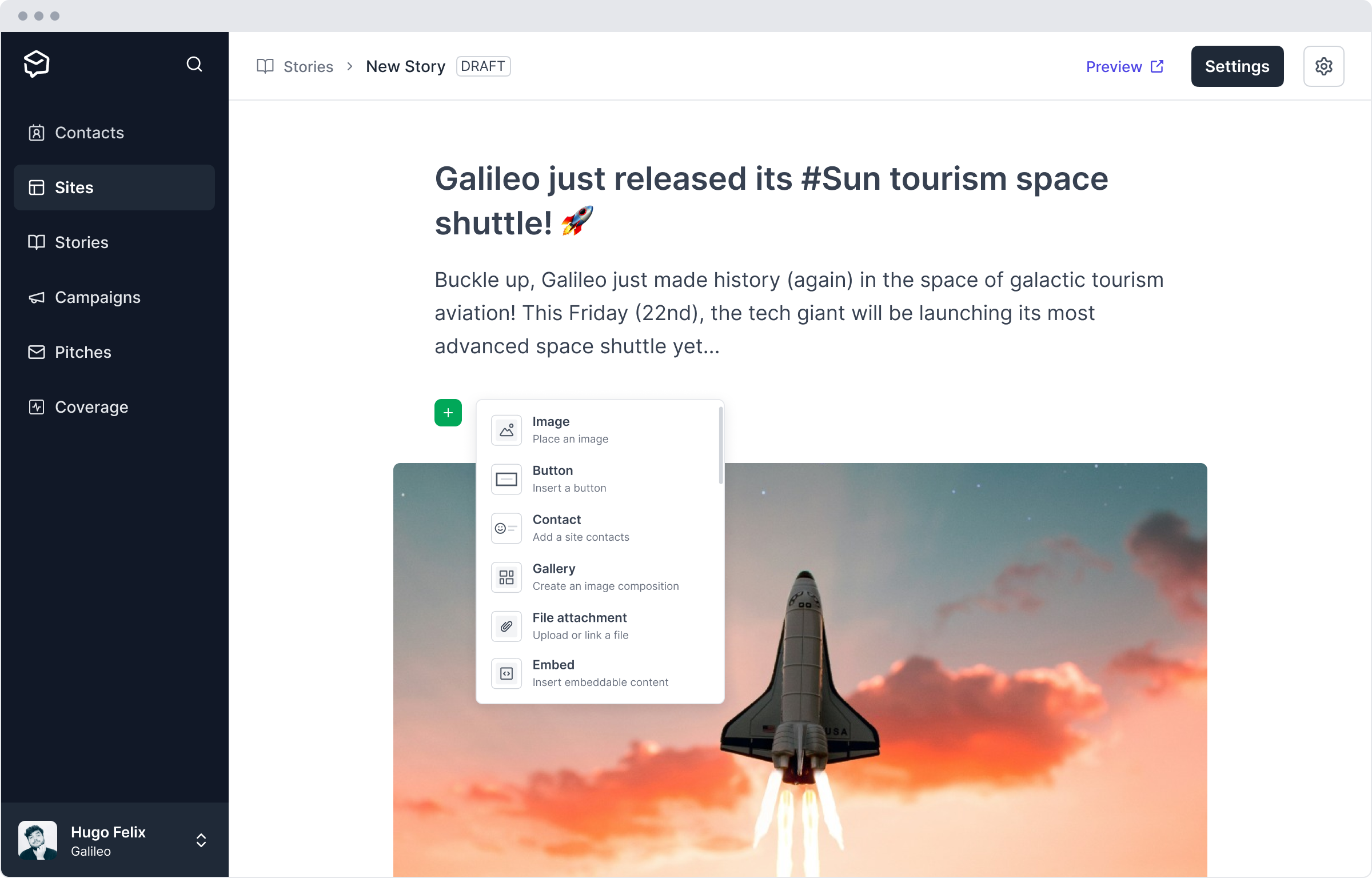
Creating a strong digital PR strategy starts with a few fundamental steps:
To make your goals meaningful, tie them to your business objectives. For example, if your focus is SEO, set specific link-building targets, or aim for increased search rankings. If it’s brand awareness, identify which publications or audience segments matter most. Defining your audience – by job title, industry, interests, or behavior – helps shape not just what you say, but where and how you say it.
These are the people you will be pitching for earned media. Start by building a media list of journalists, bloggers, and content creators who cover your industry or related topics. Look at the kinds of stories they publish, the tone they use, and how often they accept contributed content or pitches. Tools like LinkedIn, Muck Rack, and even Substack can help identify relevant contacts and organize outreach efforts effectively. Read more about how to find journalist information →
Think unique research, data-driven content, expert commentary, or bold brand stand campaigns. Your content should offer something original or valuable – something that gives media a reason to cover it. This might be a surprising stat from a customer survey, an expert take on a current trend, or a creative brand campaign that’s likely to spark conversation. Focus on quality over quantity, and aim to add something new to the conversation rather than recycling what's already out there.

With your business, not with each other. That would be creepy.
This can include things like media pitching, influencer marketing, company blogs, and replying to journo requests on channels like HARO and Source of Sources. A balanced strategy uses multiple channels to maximize reach. For earned media, personalize your pitches to each journalist’s beat and audience. For owned channels like your blog or newsroom, optimize your content for SEO and shareability. Consider repurposing content across formats – e.g. turning a press release into a LinkedIn post or email campaign – to extend its life and impact.
To stay organized, consider creating a campaign plan or calendar outlining key content themes, pitch deadlines, publication timelines, and follow-up dates. Use a simple spreadsheet or a dedicated task management tool to map out the moving parts in one place.
To capture key insights and optimize future efforts. Set up tools like Ahrefs, Google Analytics, or Prezly to monitor referral traffic, engagement, backlinks, and coverage as soon as your campaign goes live. Use these insights to see what’s working and where you can improve. For example, if a particular media outlet drives a lot of qualified traffic, that’s a signal to build a deeper relationship there. Continuous measurement is what turns one-off campaigns into a long-term digital PR engine.

Or, what numbers to track so that the CEO doesn't fire you.
When executed properly, digital PR strengthens your brand’s reputation and generates leads through increased audience engagement.
- Earn high-quality backlinks from authoritative sites.
- Strengthen your site's domain authority and boost search engine rankings.
- Gain exposure across online platforms, digital channels, and industry publications.
- Improve brand presence in search engine results and social media feeds.
- Build a positive brand reputation through consistent media coverage and brand mentions.
- Position your brand as a trusted source through expert commentary and quality content.
- Integrate digital PR content seamlessly with broader content marketing strategies.
- Ensure consistent messaging across multiple channels for a cohesive brand stand.
- Track SEO impact, referral traffic, and audience engagement with greater precision.
- Use tools like Google Analytics, Ahrefs, and Prezly to monitor PR campaign success.
Tip: When planning your digital PR activity, tie each campaign to one or more of these benefits. For example, if your main goal is SEO, prioritize backlinks and identify which publications carry the most authority. If trust-building is your aim, focus on expert commentary and thought leadership that positions your team as go-to voices in your niche.
Measurement is one of the key benefits of digital PR over traditional methods, in that it's a lot easier to ascribe numbers to activity online than, say, word of mouth. While exactly what you measure will depend on your goals, strategy, and tactics, here are some PR metrics that are likely to fall under your digital PR umbrella.
One of the clearest signs that your digital PR is working is a noticeable increase in referral traffic. This refers to the number of visitors who come to your website through links from online publications, media outlets, industry blogs, or other high-authority sources. A spike in referral traffic typically means your content is being featured in the right places and is attracting a relevant audience that’s interested in your story or offering. See also, measuring UVPM (Unique Visitors Per Month) in PR →
Digital PR can play a major role in improving your SEO. By earning high-quality backlinks from reputable websites, you signal to search engines that your content is credible and worth ranking. Over time, this can lead to higher visibility in search results for keywords tied to your campaigns. Regularly monitor the number and quality of backlinks you earn (those from high-authority sites are typically worth more), and track changes in your rankings to understand how your PR efforts contribute to your broader SEO strategy.
Learn more about SEO for press releases →
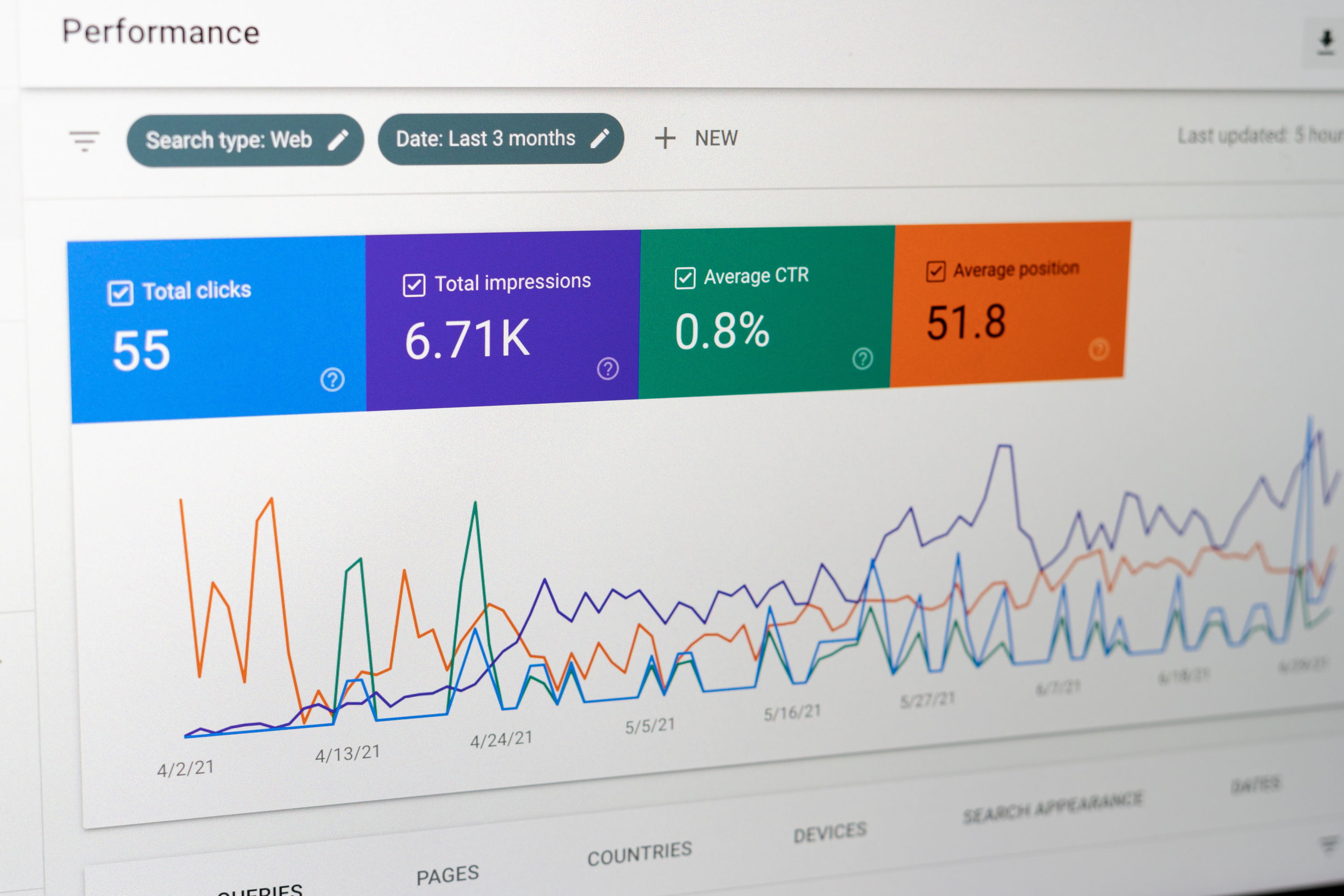
Boost your press release visibility with SEO. Learn how to use keywords, and more to drive traffic, improve rankings, and maximize impact.
Social engagement is a good indicator of how well your digital PR content resonates beyond the original publication. Keep an eye on metrics like shares, comments, likes, and impressions across platforms like LinkedIn, X (formerly Twitter), Facebook, and Instagram. Strong engagement can extend your reach, improve brand visibility and so help build brand awareness, and create a positive impression with both audiences and influencers in your space.
Tracking brand mentions gives you a sense of how often your name is appearing in online conversations, whether through mentions in online publications, blog posts, or social media. This kind of visibility builds credibility over time, especially if your brand is getting media attention in trusted publications. You can also use media monitoring tools to spot trends and identify which stories or angles are gaining the most traction, which can help inform your digital PR campaigns.
Pro tip: Create a simple dashboard that brings together key metrics like backlinks earned, referral traffic, domain authority, and media placements. This could be as simple as a Google Sheet or as advanced as using a tool like Prezly’s reporting features. Reviewing results monthly or per campaign helps connect activity to outcomes and demonstrate ROI to stakeholders.
While harder to measure directly, leads and conversions are an important piece of the digital PR puzzle – especially if you’re running campaigns with clear calls to action. Look for connections between media placements and outcomes like email signups, free trial requests, or contact form submissions. Being able to link public relations activities to tangible business results helps make the case for continued investment.
You don’t have to track all of this manually. Depending on your needs, different PR tools can help streamline different parts of the process:
- For media list building: Muck Rack, Propel, Substack
- For outreach and pitching: Prezly, BuzzStream
- For tracking coverage: Prezly, Mention, Google Alerts, Meltwater
- For SEO performance and backlinks: Ahrefs, Moz, SEMrush
- For analytics and reporting: Google Analytics, Prezly
Combining a few of these into your workflow gives you visibility over each stage of the PR process, from pitching to placement to performance, and give you information to refine your digital PR strategy.
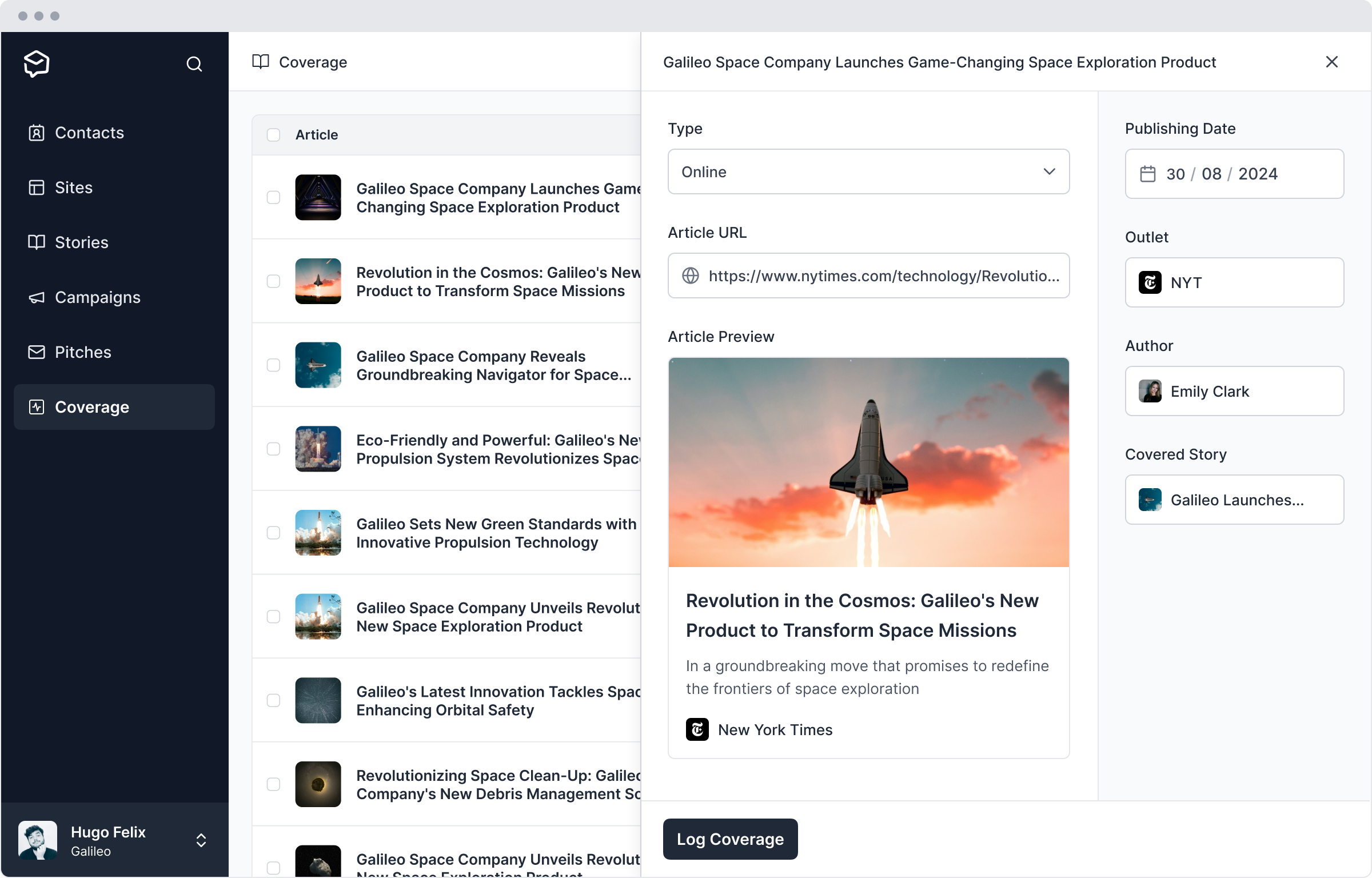
Want to see how Prezly can streamline your digital PR campaigns? Sign up for a free 14-day trial and start building stronger media relationships, pitching stories, and tracking results all in one place.
Start 14-day free trialChoosing between hiring a digital PR agency or managing campaigns internally depends on your brand's needs.
- Agencies bring deep expertise, established media relationships, and save your team time but they often come at a higher cost.
- In-house teams allow for more agile response times, tighter brand control, and lower long-term costs but require a strong internal skillset.
If you're not sure whether to build in-house or go external, ask yourself:
- Do we have someone internally who can consistently create and pitch high-quality stories?
- Do we need quick results or are we investing in a long-term strategy?
- Is media relationship-building a current strength, or is it a gap?
- Do we have the budget for an agency retainer, or would investing in tools and internal training be more sustainable?
Hybrid teams can also leverage PR tools like Prezly to streamline media outreach, track online visibility, and report results more efficiently. With Prezly, you can create beautiful, branded newsrooms, send personalized pitches to journalists, manage your media contacts, and track every interaction in real time, all from one intuitive platform.

Start your free 14-day Prezly trial today and see how easy it is to run smarter, faster, and more impactful digital PR campaigns, from start to finish.
Ready to start growing your media reach?
With Prezly you can publish press releases online, and share them directly with journalists. 14-day free trial, no credit card required.
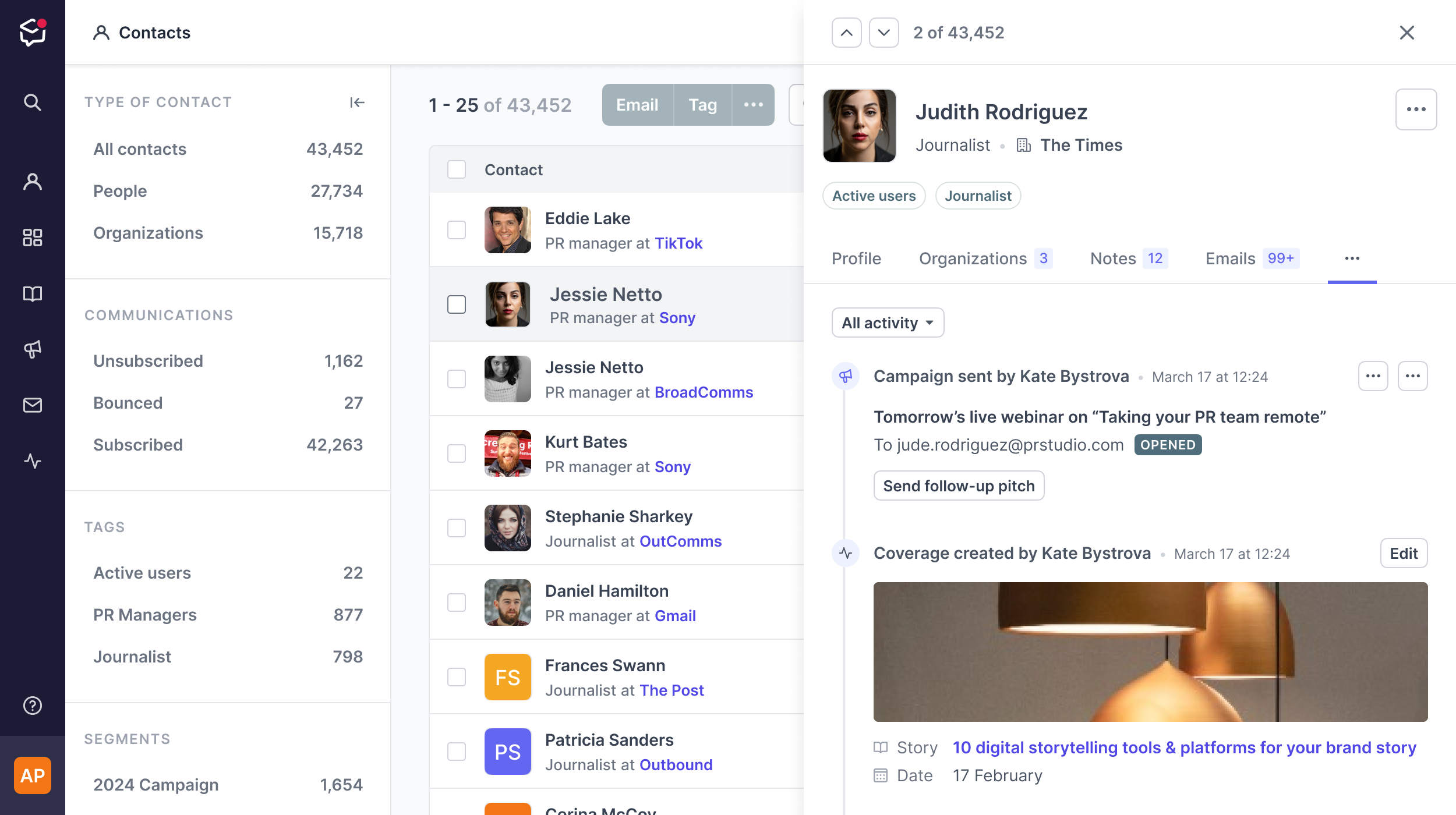
Social media engagement